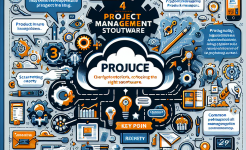Understanding the R&D IPD Process
The R&D IPD process is a comprehensive approach that aims to streamline product development from concept to launch. It involves multiple stages, including concept generation, planning, development, verification, and launch. Each stage has its own set of activities and deliverables, and the process is designed to ensure that all aspects of product development are coordinated and integrated.
At the concept generation stage, ideas for new products are brainstormed and evaluated. This is a crucial phase as it sets the direction for the entire development process. The planning stage involves defining the project scope, setting goals, and creating a detailed project plan. During the development stage, the product is actually designed and built. Verification ensures that the product meets the specified requirements, and the launch stage involves introducing the product to the market.
Effective risk management in the R&D IPD process is essential as it helps in identifying potential issues at each stage. By proactively addressing these risks, companies can avoid costly delays, budget overruns, and quality problems. It allows for better decision-making, enabling teams to allocate resources effectively and focus on the most critical aspects of the project.
Identifying Risks in the R&D IPD Process
There are various types of risks that can occur in the R&D IPD process. Technical risks are common, especially when developing new and innovative products. These can include challenges in achieving the desired performance, compatibility issues, or difficulties in integrating new technologies. For example, a company might be developing a new smartphone with advanced camera features. Technical risks could involve problems in getting the camera to achieve the required resolution or in ensuring smooth integration with the phone's software.
Market risks are also significant. The market is constantly evolving, and there is a risk that the product might not meet the market demand by the time it is launched. Competitors might introduce similar products earlier or offer better features at a lower price. For instance, a software company developing a new productivity tool might face the risk of a competitor launching a similar tool with more user-friendly features before their product is ready.
Another type of risk is related to project management. This can include issues such as poor communication within the team, unrealistic project schedules, or insufficient resources. If the project team members are not communicating effectively, important information might be missed, leading to misunderstandings and delays. Unrealistic schedules can put excessive pressure on the team, resulting in rushed work and potential quality issues.
The Impact of Risk Management on Product Quality
Risk management has a direct impact on product quality. By identifying and addressing potential risks early in the R&D IPD process, companies can ensure that the final product meets or exceeds the quality standards. For example, if a risk related to a component's reliability is identified during the development stage, the team can take steps to improve its design or select a more reliable alternative.
In the verification stage, risk management helps in focusing on the areas that are most likely to have quality issues. This allows for more targeted testing and validation, reducing the chances of overlooking critical problems. For instance, if a risk assessment indicates that a particular software module might have compatibility issues with certain operating systems, more extensive testing can be carried out on those systems.
Moreover, risk management promotes a culture of quality within the organization. When teams are aware of the potential risks and are actively working to mitigate them, they are more likely to pay attention to details and take pride in their work. This ultimately leads to a higher quality product that is more likely to satisfy customers and gain a competitive edge in the market.
Risk Management and Cost Control
Controlling costs is a major concern in the R&D IPD process, and risk management plays a vital role in this aspect. By identifying and addressing risks early, companies can avoid costly rework and delays. For example, if a risk related to a manufacturing process is identified during the development stage, the team can work on optimizing the process before mass production begins. This can prevent production bottlenecks and reduce the need for expensive last-minute changes.

In addition, risk management helps in making more accurate cost estimates. When potential risks are taken into account, the budget can be more realistically set. This reduces the likelihood of budget overruns, which can have a significant impact on the company's finances. For instance, if a risk assessment reveals that there might be additional costs associated with obtaining regulatory approvals, the budget can be adjusted accordingly.
Furthermore, effective risk management can lead to cost savings through better resource allocation. By focusing on the areas with the highest risks, resources can be directed where they are most needed. This ensures that resources are not wasted on less critical aspects of the project, resulting in overall cost efficiency.
Risk Management and Project Schedule
The project schedule is another area where risk management has a significant impact. By identifying potential risks that could cause delays, the project team can develop contingency plans to keep the project on track. For example, if a risk assessment indicates that a key supplier might face production issues, the team can identify alternative suppliers in advance or negotiate longer lead times.
In the planning stage, risk management helps in setting more realistic schedules. When potential risks are factored in, the project timeline can be adjusted to account for any potential delays. This reduces the chances of the project falling behind schedule, which can have a domino effect on subsequent stages and the overall launch date.
During the execution of the project, risk management allows for quick response to emerging risks. If a new risk arises, the team can immediately implement the pre-defined contingency plan or develop a new strategy to minimize the impact on the schedule. This flexibility helps in maintaining the project's momentum and ensuring timely delivery.
The Role of Communication in Risk Management
Communication is a key element in effective risk management in the R&D IPD process. All team members need to be aware of the potential risks and their roles in addressing them. Regular communication channels should be established to share information about risk identification, assessment, and mitigation strategies.
For example, in a cross-functional R&D team, the engineering, marketing, and manufacturing departments need to communicate effectively about the risks associated with the product. The engineering team might identify technical risks, while the marketing team could provide insights into market risks. By sharing this information, the team can develop comprehensive risk management plans.
Moreover, communication with external stakeholders such as suppliers, customers, and regulatory bodies is also crucial. Suppliers can provide information about potential risks related to raw materials or component availability. Customers can offer feedback on their needs and expectations, which can help in identifying market risks. Regulatory bodies can provide guidance on compliance requirements, reducing the risk of non-compliance issues.
Implementing Risk Management in the R&D IPD Process
Implementing risk management in the R&D IPD process requires a structured approach. First, a risk management plan should be developed at the beginning of the project. This plan should define the roles and responsibilities of the team members, the risk identification and assessment methods, and the strategies for risk mitigation.
Regular risk assessments should be conducted throughout the project. These assessments can be in the form of workshops, where team members brainstorm potential risks and evaluate their likelihood and impact. Once the risks are identified and assessed, appropriate mitigation strategies should be developed and implemented.
Training and awareness programs are also important to ensure that all team members understand the importance of risk management and are equipped with the necessary skills. By providing training on risk identification, assessment, and mitigation techniques, the team can be more effective in managing risks.
In conclusion, risk management is of utmost importance in the R&D IPD process. It impacts various aspects of product development, including product quality, cost control, project schedule, and communication. By identifying potential risks early, companies can take proactive steps to address them, reducing the likelihood of costly delays, budget overruns, and quality issues. Implementing a structured risk management approach, along with effective communication and training, can help organizations navigate the complex R&D IPD process successfully and bring high-quality products to market in a timely and cost-effective manner. As the business environment becomes more competitive and the pace of technological change accelerates, the importance of risk management in the R&D IPD process will only continue to grow. Companies that prioritize risk management will be better positioned to achieve their product development goals and gain a competitive advantage in the market.
ARTICLE TITLE :Discussion on the importance of risk management in the R&D IPD process ,AUTHOR :ITpmlib

















